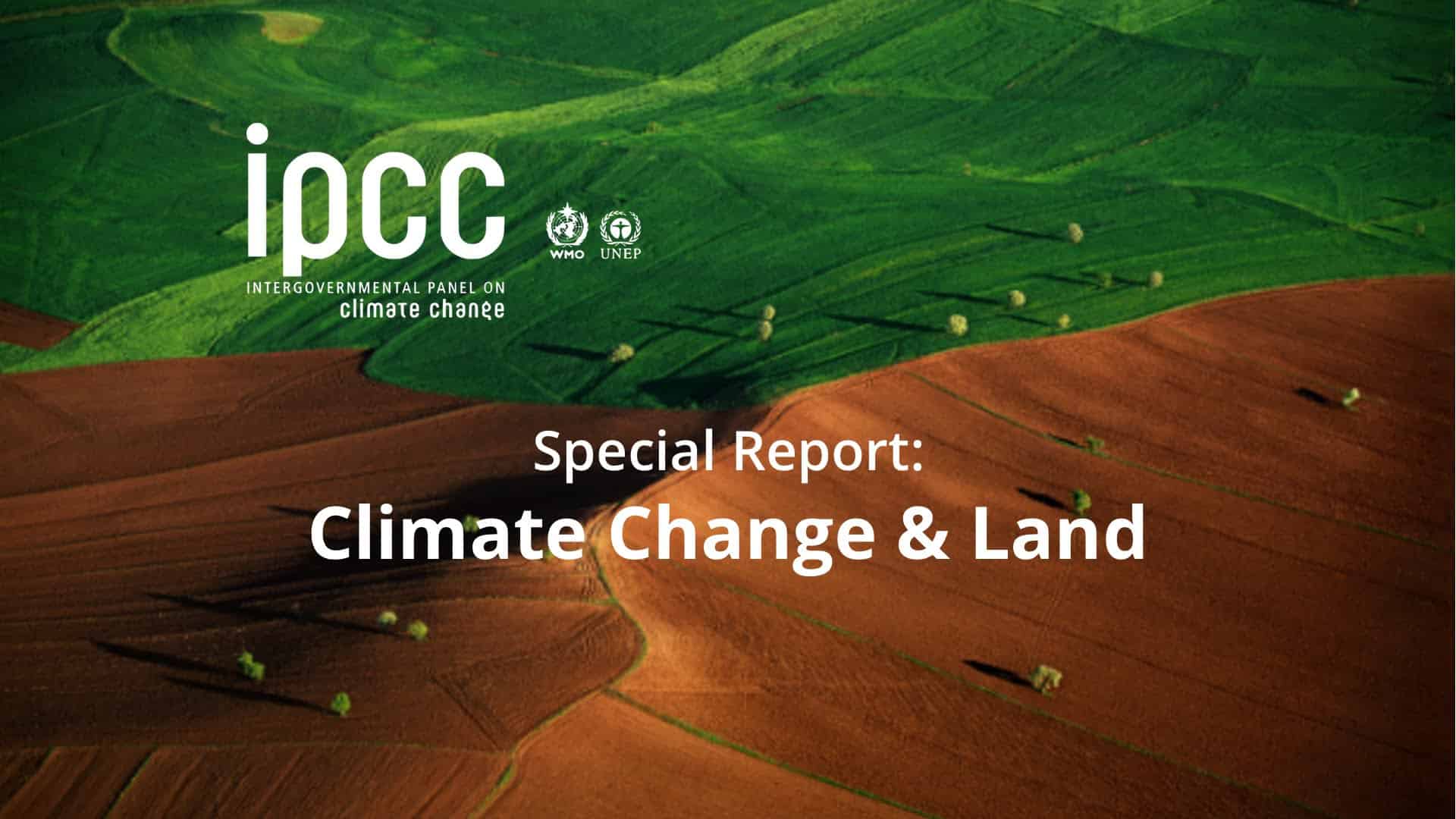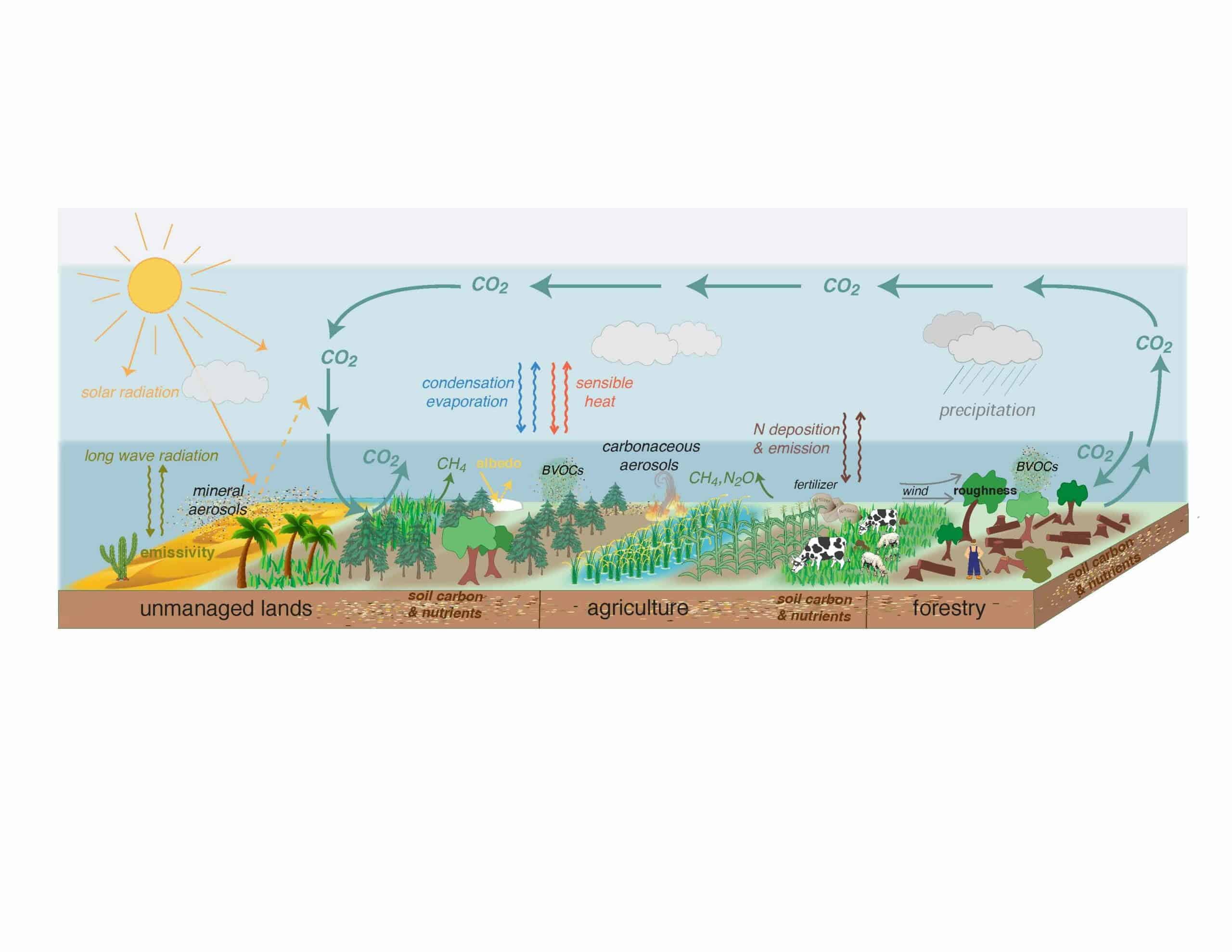IPCC, Special Report, Climate Change & Land
Augusti 2019
En specialrapport från IPCC om klimatförändringar, ökenspridning, nedbrytning av land, hållbar markförvaltning, livsmedelssäkerhet och växthusgasflöden i jordens ekosystem
Rapporten understryker att jordbruk, skogsbruk och andra typer av markanvändning står för 23% av utsläppen av växthusgaser orsakade direkt eller indirekt av mänsklig verksamhet. Den noterar också att naturliga och förvaltade landssystem absorberar koldioxid motsvarande nästan en tredjedel av koldioxidutsläppen från fossila bränslen och industri.
APPROVED REPORT OUTLINE
Chapter 1: Framing and Context
- Socio-economic, biogeochemical, and biophysical interactions between climate change and desertification, land degradation, food security and GHG fluxes
- Additional and alternative demands for, and use of, land in the context of climate change, as well as socioeconomic and technological changes.
- The contribution of this report in relation to reports by IPCC and other relevant institutions (for instance IPBES, UNCCD, FAO, etc.)
- Key concepts and definitions including vulnerability assessments, adaptation limits, and residual risks
- Treatment of uncertainties
- Integrated storyline of report, chapter narrative, sequence, linkages
Figure: 1.4
Chapter 2: Land–Climate interactions
- Climate change and variability, including extremes, that influence desertification, land degradation, food security, sustainable land management and GHG fluxes in terrestrial ecosystems
- Terrestrial GHG fluxes in natural and managed ecosystems (e.g. soils, forests and other land cover types) and related stocks: methods, status, trends, projections, and drivers
- Biophysical and non-GHG feedbacks and forcings on climate
- Consequences for the climate system of land-based adaptation and mitigation options, including negative emissions
Box 2.1-Figure 1
Chapter 3: Desertification
-
The specific nature of desertification
-
Status, current trends and future projections of desertification linked to climate change, globally and regionally
-
Climatic and anthropogenic direct and indirect drivers of desertification including extremes such as drought
-
Attribution: distinguishing between climatic- and human-induced changes
-
Desertification feedbacks to climate, including sand and dust storms
-
Climate-desertification interactions, including past observations and future projections
-
Observed and projected impacts of desertification on natural and human systems in a changing climate. This could include the role of aerosols and dust, impacts on ecosystem services (e.g. water, soil and soil carbon and biodiversity) and impacts on socio-ecological systems (e.g. impacts on vulnerable communities, poverty, food security, livelihoods, and migration).
-
Technological, socio-economic and policy responses to desertification under a changing climate including economic diversification, enabling conditions, co-benefits as well as limits to adaptation
-
Hotspots and case-studies
Figure: 3.1
Figure: 3.2
Chapter 4: Land Degradation
- Processes that lead to degradation and their biophysical, socio-economic, and cultural drivers across multiple temporal and spatial scales
- Linkages and feedbacks between land degradation and climate change, including extremes (e.g. floods and droughts), erosion, and their effects on ecosystems and livelihoods
- Status, current trends and future projections of land degradation linked to climate change, globally and regionally
- Attribution: distinguishing between climatic- and human-induced changes
- Direct and indirect impacts of Climate Change on Land Degradation, Land Degradation on Climate Change, and reactive and proactive response options, such as land restoration, for key socio-ecological systems
- Observed and projected impacts of land degradation on natural and human systems in a changing climate. This could include impacts on ecosystem services (e.g. water, soil and soil carbon, biodiversity) and impacts on socio- ecological systems (for example, impacts on vulnerable communities, poverty, food security, livelihoods, and migration).
- Integrated higher-level responses, e.g. sustainable land management (where possible related to the SDGs), including considerations of cost, incentives and barriers and limits to adaptation
- Hotspots and case-studies
Figure: 4.3
Chapter 5: Food Security
- Framing and Context: food and nutrition security (availability, access, utilization, stability, ffordability), food systems (including trade and markets), farmng systems including agroforestry, food-energy-water nexus, and the role of desertification and land degradation
- Status, current trends and future projections of food and nutrition security linked to climate change, globally and regionally
- Attribution: distinguishing between climatic- and human-induced changes.
- Observed and projected impacts of climate change and variability, including extremes, on food and nutrition security, including food production, prices and livelihoods
- Impacts of food and nutrition security on climate change
- Responses in terms of adaptation considering the full range of options and their use, as well as limits to adaptation
- GHG mitigation options associated with food supply and demand
- The influence of land based mitigation options on food and nutritional security
- Synergies and trade-offs between adaptation and mitigation (considering scales, linkages, and co-benefits), sustainable land management
- Consequences of measures to enhance food and nutrition security for adaptation and mitigation in a changing climate
- Hotspots and case-studies
Figure: 5.1
Chapter 6: Interlinkages between desertification, land degradation, food security and GHG fluxes: synergies, trade-offs and integrated response options
- Combined and interactive effects between desertification, land degradation, food security and GHG fluxes, and scenarios
- Economic and social dimensions of response options including sustainable land management: synergies/trade-offs/side-effects/co-benefits
- Impacts of land-based mitigation options on land degradation, desertification, food security, and ecosystems and their services (e.g. soil, fresh water, biodiversity)
- Impacts of land-based adaptation options on land degradation, desertification, food security, ecosystems and their services and limits to adaptation
- Land-based negative emissions (including the role of forests, soils and the use of biomass) and their role in balancing anthropogenic sources and sinks
- Adaptation-mitigation interactions and co-benefits
- Competition for land
- Case-studies
Figure: 6.2
Chapter 7: Risk management and decision making in relation to sustainable development
-
Risks arising from interaction of climate change with desertification, land degradation, food security and other development pressures (.e.g. conflicts, migration)
-
Management responses to areas of substantive risk arising from climate change
-
Synergies and trade-offs of response options that affect sustainable development and climate change adaptation and mitigation
-
Governance, institutions and decision-making across multiple scales that advance adaptation, mitigation and sustainable land management in the context of desertification, land degradation and food security
Figure: 7.1











